Creating a Game on Roblox: A Comprehensive Guide
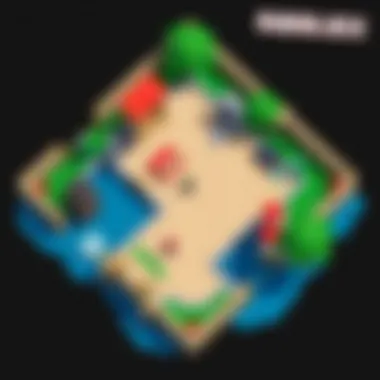
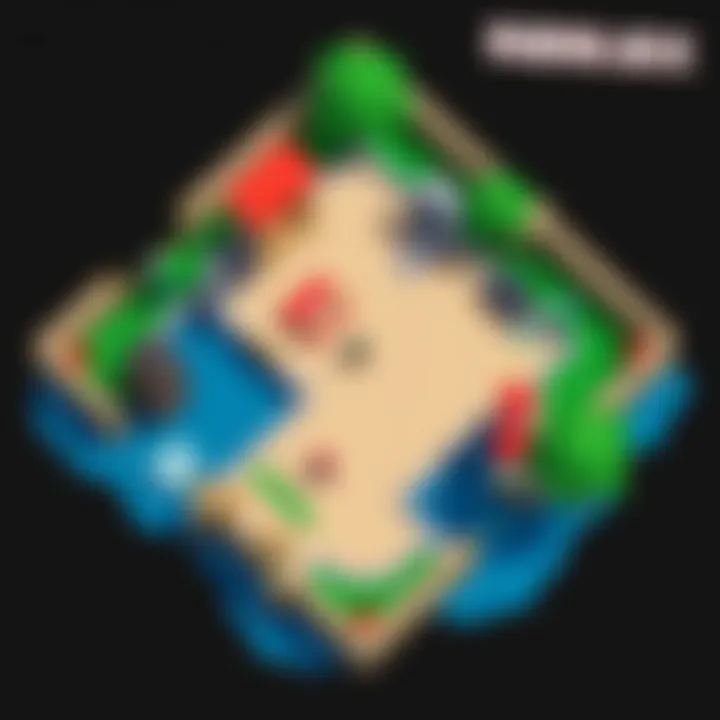
Intro
Creating a game on Roblox can be an exciting venture for both seasoned developers and newcomers alike. With millions of players and a thriving community, the platform provides a unique opportunity to bring your game ideas to life. For some, this journey begins as a simple curiosity about how games are made, while for others, it’s a step toward becoming a professional developer. Regardless of your background, understanding the basics of game development on Roblox is key to realizing your creative vision.
As we explore this guide, we will cover essential components like planning, design, scripting, testing, and finally, launching your game. You don’t need to be a coding whizz or a graphics artist to get started. What matters most is your passion and willingness to learn. The Roblox platform not only allows you to create engaging experiences but also encourages collaboration with others, making the whole process even more enriching.
Whether you're developing a simple obstacle course or a complex role-playing game, this guide offers a roadmap that progresses step-by-step. Each section will unfold with practical advice and insight, ensuring you’re not just following a recipe, but grasping the reasoning behind each action.
Gameplay Tips
Before even diving into creating your game, it’s beneficial to grasp some gameplay tips that can help you navigate the platform effectively.
Basic Controls and Navigation
Understanding the basic controls on Roblox will ensure you can maneuver easily in the development environment. Here are a few fundamental tips to get you started:
- W, A, S, D Keys: Move your character forward, backwards, and sideways.
- Space Bar: Jump, which can assist in exploring landscapes or testing your game.
- E Key: Interact with objects in the game, a critical function for engaging players.
Familiarity with these controls will significantly ease your development process. The more comfortable you are with navigation, the more you can focus on your game design.
Advanced Gameplay Strategies
As you gain confidence, you can explore strategies to enhance gameplay. Here are a couple of avenues to consider:
- Player Engagement: Create challenges and rewards that keep players coming back. Utilize leaderboards, achievements, and in-game currencies to motivate continuous play.
- Community Feedback: Opening the floor for player feedback can provide valuable insights. Incorporating user suggestions not only improves your game but also fosters a sense of belonging among the players.
By employing these strategies, your game can transform from a simple project into something that resonates with a broad audience.
User-Generated Content
Roblox thrives on user-generated content, meaning that players can create their own games, experiences, and items within the platform. This not only enhances creativity but also allows for a diverse range of experiences that can cater to all types of players.
Highlights of Notable User Creations
Look no further than the top games on the platform for inspiration. Games like "Adopt Me!" and "Brookhaven" have gained immense popularity due to their innovative concepts and engaging gameplay. These games often demonstrate the power of community in shaping experiences, gathering feedback, and evolving through player engagement. Assessing what makes these games successful can inspire your own design ideas.
Tips for Creating Engaging Games
When considering your own game, keep these tips in mind:
- Storytelling: Weave narrative elements into your game to captivate players.
- Visual Appeal: Invest time in designing attractive avatars and environments that draw players in.
- Functionality: Ensure your game runs smoothly without glitches. Players easily lose interest if they encounter bugs or lag.
As we traverse through this guide, remember that each step is a building block toward your unique creation. The ability to express your ideas and craft captivating experiences awaits you on Roblox.
Preface to Game Development on Roblox
In the realm of online gaming, Roblox stands out as a unique platform that not only allows players to enjoy games but also empowers them to create their own. This introduction to game development on Roblox is pivotal for anyone wishing to dive into the world of game creation. Whether you're a novice with a budding idea or a seasoned developer looking to expand your horizons, understanding the basics of Roblox can set the stage for much bigger achievements.


Roblox provides the tools and environment for creativity to blossom. As you embark on your game development journey, it's critical to grasp how the platform operates, its user dynamics, and the potential it holds.
Overview of Roblox as a Gaming Platform
Roblox is more than just a gaming platform; it serves as a vibrant community where creativity meets technology. Founded in 2004, its ethos revolves around user-generated content, allowing creators to build and share diverse experiences ranging from simple obstacle courses to sophisticated role-playing games.
The appeal of Roblox lies in its accessibility. Players of various ages engage with it, providing a broad user base which fosters a dynamic gaming environment. Moreover, the platform is free to join, but it offers in-game purchases and subscriptions through Robux, its virtual currency. This opens doors for developers to potentially monetize their creations.
Through the use of Roblox Studio, developers can dive into a world of imagination. The platform’s vast array of tools and resources allows for creative storytelling and game mechanics, making it a playground for aspiring game makers.
Importance of Game Development Skills
Learning the ropes of game development isn't just a leisurely pursuit; it’s a valuable skill set in today's digital landscape. Having the ability to create games enhances problem-solving skills, boosts critical thinking, and fosters collaboration as often developers can work in teams. This doesn’t only apply to Roblox, but many fields benefit from these skills.
The gaming industry continues to grow exponentially, and having competency in design and scripting can pave the way for careers in game design and development. Furthermore, these skills can also enhance user engagement and retention, meaning that successful developers often see their games played by millions.
As you progress through this guide, you will uncover the various components involved in game creation, from conceptualization to user interface design, equipping you with the knowledge to turn your ideas into reality.
"Roblox is the ultimate canvas; it gives you the brush and the palette to paint not just games, but entire worlds."
Becoming skilled in game development on Roblox isn't merely about becoming proficient with software; it’s about understanding your audience, embracing creativity, and continually iterating on ideas.
As we dive deeper, remember that each section will build upon the last, creating a comprehensive structure designed to help you thrive in the world of Roblox development.
Understanding the Roblox Studio Interface
When delving into game development on Roblox, grasping the ins and outs of the Roblox Studio Interface is pivotal. This environment offers you the tools to turn your imaginative ideas into interactive realities. Knowing how to navigate it not only saves you time but also enhances the quality of your game creations. Whether you're a newbie or a seasoned developer, mastering this interface can mean the difference between a mediocre game and a breakout hit.
Navigating the Dashboard
The dashboard is akin to the control center of your game development journey. When you boot up Roblox Studio, you'll be greeted by a clean layout filled with panels and windows, each with its functions and purposes. Familiarizing yourself with this space starts with recognizing key areas: the Explorer, Properties, and the Toolbox.
- Explorer: Here, you will find a comprehensive list of all the objects in your game. It’s crucial for managing parts and can help you locate elements quickly. This can be especially useful when dealing with complex machinery or multi-layer structures.
- Properties: This panel allows you to modify characteristics of selected items in your game. For instance, if you select a block in the Explorer, the Properties window lets you adjust its size, color, and position.
- Toolbox: Think of the Toolbox as your treasure chest. It houses models, scripts, and images that can be dragged straight into your game. It's a fabulous resource for both inspiration and functionality.
By understanding how to navigate these areas, you’ll find yourself working more efficiently and confidently. Remember, time spent getting adept at this dashboard pays dividends as you create.
Toolsets for Game Creation
Roblox Studio is well-stocked with a variety of toolsets crafted for different aspects of game design. Each tool serves a specific function, ultimately contributing to a holistic development experience. Here’s a closer look at some of the core tools available to you:
- Terrain Editor: This feature allows you to sculpt landscapes and environments. You can create mountains, valleys, or even intricate caves just with a few clicks.
- Part Tools: These are your basic building blocks. They let you create and manipulate objects within your game. With these tools, you can build anything from simple platforms to complex structures.
- Scripting Tools: Understanding Lua scripting can ramp up your game to a whole new level. Using the built-in scripting editor, you can write scripts to dictate how elements in your game interact.
- Animation Editor: If you need characters or objects to move in a certain way, the Animation Editor can help you create animations that add flair and personality to your game.
Each of these tools is designed to streamline your workflow, allowing you to focus on what really matters: the gameplay experience. Just like a painter requires brushes and colors, you too need to become familiar with these toolsets to vividly realize your vision.
"The more adept you are at handling the Roblox Studio tools, the more creativity can flow into your projects."
In summary, grasping the Roblox Studio interface is not just beneficial; it's essential for success in game development on this platform. Familiarity with the dashboard and toolsets can open doors to creating engaging and polished games that resonate with your audience.

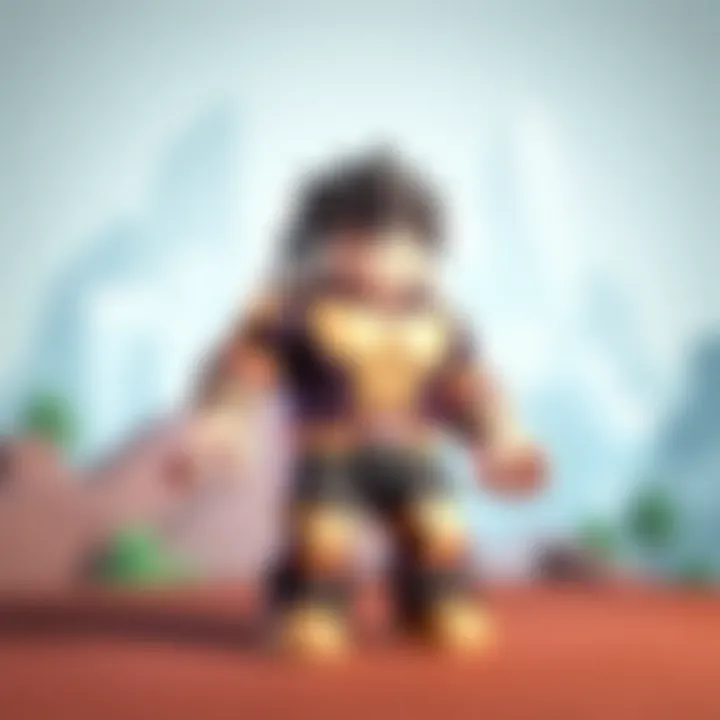
Conceptualizing Your Game Idea
Understanding how to conceptualize a game idea stands as one of the foundations of a successful Roblox game. This stage is where your imagination meets the mechanics of game development. Before diving into complex game design and scripting, taking the time to flesh out your idea can make the difference between a well-received game and one that flounders unnoticed. Not only does it allow you to align your vision with audience expectations, but it also helps clarify the direction of your development process.
In the vast sea of games on Roblox, it's crucial to carve a niche that speaks to your particular audience. Knowing who your players will be can guide your design choices, from gameplay mechanics to aesthetics. Take a moment to think about the types of players you want to attract. Are they competitive gamers looking for a challenge, or are they casual players wanting to unwind? Understanding your target demographic can significantly enhance player satisfaction and increase the time they spend in your game.
"The journey of a thousand miles begins with one step." – Lao Tzu
Identifying Your Target Audience
When you sit down to sketch out your game, it’s important to start with your target audience. Who are they? What do they enjoy? Are they teenagers interested in RPGs, or maybe younger children captivated by imaginative worlds? Knowing your player base is pivotal.
- Demographics: Consider age and interests. Researching popular games among different age groups could lend valuable insights.
- Game Preferences: Dive into existing Roblox games that resonate with your targeted demographic. Take note of their gameplay mechanics, storylines, and aesthetics.
- Feedback Collection: Engaging with forums like Reddit or Roblox’s own community can provide direct feedback on what players enjoy.
Different audiences often desire different experiences. By identifying your target audience, you can tailor your game's aesthetics and mechanics. This leads to a more cohesive game experience that enhances user retention and satisfaction.
Researching Successful Game Genres
Once you have a clear idea of your audience, it’s time to shift focus on specific game genres. Researching existing games on Roblox that are popular will give you an overview of what resonates with players. Don't just follow trends blindly but try to understand the underlying mechanics and themes.
Some genres to explore might include:
- Adventure: Games that offer exploration and puzzles. Think about how to intersperse challenges that keep players engaged.
- Simulation: Players love to build and manage. Add a twist to traditional simulation gameplay to stand out.
- Role-Playing Games (RPG): Engage players with a storyline and character progression. This can create deeper connections with your audience.
- Tycoon Games: These are always a hit. Implement elements that allow for creativity, like managing a diverse set of resources.
The key is to study what elements of these game genres are performing well and consider how you can put your unique spin on these ideas. Understanding the current landscape can offer pathways to innovate your own game and attract a following where it counts.
Designing Game Mechanics
Designing game mechanics is crucial in creating a memorable and enjoyable game on Roblox. Game mechanics refer to the rules and systems that dictate how players interact with the game world. They shape the gameplay experience and can influence players' engagement levels significantly. A well-thought-out set of mechanics can turn a basic game into an addictive experience that keeps players returning for more.
The nature of your game mechanics can determine everything from user satisfaction to the longevity of your game. As a developer, you should consider how these mechanics can enhance player experience, maintain challenge, and foster engagement. This section will delve into two vital aspects of designing game mechanics: crafting the player experience and striking the right balance between challenge and engagement.
Crafting the Player Experience
Creating an engaging player experience is not just about visuals or storyline; it heavily relies on the game mechanics in place. You want players to immerse themselves in your game, feeling a connection to the environment and mechanics as if they are living in the world you've built. To accomplish this, think of the following elements:
- Feedback Loops: Make sure to provide immediate feedback for actions taken by players. Whether it's a sound that accompanies an achievement or visual effects signaling a win, these cues keep players engaged.
- Consistency: Establish a predictable set of rules that players can learn and adapt to. For example, if jumping feels different in various parts of the game, it may frustrate players. A familiar control scheme improves comfort and skill progression.
- Narrative Integration: If your game has a storyline, the mechanics should support the narrative rather than distract from it. Incorporating lore into the mechanics—like unlocking areas when specific quests are completed—adds depth and intrigue.
By paying attention to how these factors combine, you can cultivate an engaging experience that leaves players yearning for more.
Balancing Challenge and Engagement
Striking the right balance between challenge and fun is a delicate task in game design. Too much challenge can cause frustration, while too little can lead to boredom. Here are a few strategies to find that sweet spot:
- Progressive Difficulty: Gradually increase the game's challenge level. For instance, you could start players off with simpler tasks that evolve into more complex objectives as they advance.
- Player Choice: Allow players to choose their path through challenges. Providing options can create a sense of ownership in the gaming experience and keep players engaged.
- Incentives and Rewards: Implement rewarding mechanics that recognize players' efforts. Providing items, experience points, or special abilities can motivate players to tackle tougher challenges.
Ultimately, the balance between challenge and engagement is pivotal in ensuring that players stay interested while also feeling rewarded for their skill. A well-crafted approach can lead to an immersive game environment that both challenges and captivates your audience.
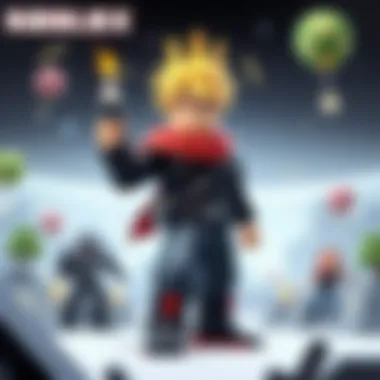
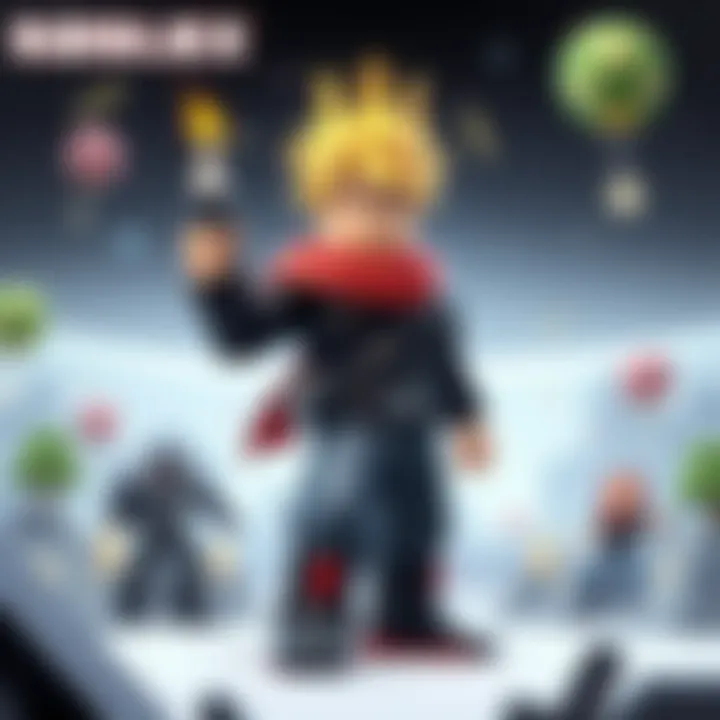
Building the Game Environment
Creating a captivating game environment is, without a doubt, one of the cornerstones of game development on Roblox. A well-structured environment doesn’t just enhance the visual appeal; it also profoundly affects player engagement and the overall gaming experience. An immersive game world can captivate players, making them feel like they belong to a living, breathing environment, which can be essential for retention and enjoyment.
When constructing your game world, consider the following aspects:
- Theme Consistency: Your environment should align with the game's theme, be it a post-apocalyptic wasteland or a cozy village.
- Player Navigation: Ensure that players can easily move through the environment, finding their way without feeling lost or frustrated.
- Visual Appeal: The aesthetic choices, color palette, and lighting play significant roles in shaping player perception and mood.
In essence, the game environment serves not just as a backdrop but as an integral part of gameplay, influencing how players interact with your game and each other.
Utilizing 3D Models and Assets
Using 3D models and assets effectively can dramatically elevate the design of your game environment. Roblox provides a rich asset library, but incorporating unique, custom-made models can set your game apart from the crowd. Here's some practical advice:
- Blend Premade and Custom Models: While the Roblox catalog offers plenty of options, personalizing these assets ensures that your game feels distinct. Consider creating unique models that resonate with your game’s narrative.
- Optimize for Performance: Large models can slow down gameplay. It’s essential to strike a balance between detail and performance. Consider simplifying models or using Level of Detail (LOD) techniques to maintain a fluid experience.
- Textures and Materials: Pay attention to the textures applied to your models. Quality textures can enhance realism, so use high-resolution images where possible. Also, take advantage of Roblox's material properties to craft lifelike surfaces.
"Great design isn't about making something look good; it's about making something that's functional and engaging."
Editing Terrain and Landscapes
Terrain and landscape editing is another fundamental aspect of building your game environment in Roblox. The platform’s terrain tools allow developers to create hills, valleys, and other geographical features, enabling a more organic feel.
- Utilizing Terrain Tools: The Terrain Editor in Roblox Studio offers various tools for manipulation. You can raise, lower, or flatten areas effectively, allowing for a dynamic and customizable landscape. Utilize these tools to craft unique terrains that complement your gameplay.
- Creating Natural Flow: When editing, think about how players will traverse the environment. Implement pathways or obstacles that guide movement naturally without being jarring. A well-planned landscape helps enhance immersion.
- Textures and Details: Just as with 3D models, textures matter here. Use the editor to apply different materials to various parts of your landscape, ensuring that the ground, water, and sky feel cohesive yet distinctive.
In summary, a thoughtfully designed environment, created with a mix of 3D models, assets, and terrains, can elevate your Roblox game from ordinary to extraordinary. Paying attention to details not only enriches the player experience but also lays the groundwork for further game development.
Scripting Basics for Roblox Games
Scripting is the engine that keeps the wheels of your Roblox game turning. It’s not merely a technical skill; it’s the backbone of interaction, making your game come alive in ways that visual design alone cannot achieve. Understanding the scripting basics is essential because it allows you to control the game’s behavior, respond to player actions, and manage all the elements within your game world. Without this knowledge, your game can feel static, leading to a lackluster player experience.
Foreword to Lua Programming
At the heart of scripting in Roblox is the Lua programming language. Renowned for its simplicity and flexibility, Lua is accessible for newcomers while providing enough depth for seasoned developers. Learning Lua is not just about memorizing commands; it's akin to learning a new language that allows you to converse with your game.
Getting started with Lua is easier than one might think. Here are some crucial aspects to consider:
- Syntax: Lua has a straightforward syntax, which means fewer headaches when you’re trying to write lines of code. Variable declarations, function definitions, and control flows are clean and easy to learn.
- Variables: A fundamental concept in any programming language. You'll use them to store player scores, game state, or even customizable elements like player character attributes.
- Functions: Functions are reusable blocks of code that perform particular tasks. They save time and make your code more organized, which is indispensable in larger projects.
- Tables: In Lua, tables can hold multiple data points and are used extensively throughout scripting. They allow you to create arrays and dictionaries which are essential for managing various game data efficiently.
To dive deeper into Lua, resources like Lua’s official website offer valuable documentation that clarifies concepts and provides examples.
Writing and Implementing Scripts
Once you have a grip on Lua fundamentals, the next step is to actually write scripts that enhance your Robloxgames. Here are some considerations to keep in mind:
- Script Types: Roblox utilizes local scripts and server scripts. Local scripts run on a player's client, while server scripts affect the entire game. Knowing when and where to use each type is crucial.
- Events and Functions: Making your game interactive involves using events. For instance, if you want something to happen when a player touches a part, you can bind a function to that event. Here's an example snippet:
lua local part = script.Parent
local function onTouch(player) print(player.Name .. " touched the part!") end
part.Touched:Connect(onTouch)







